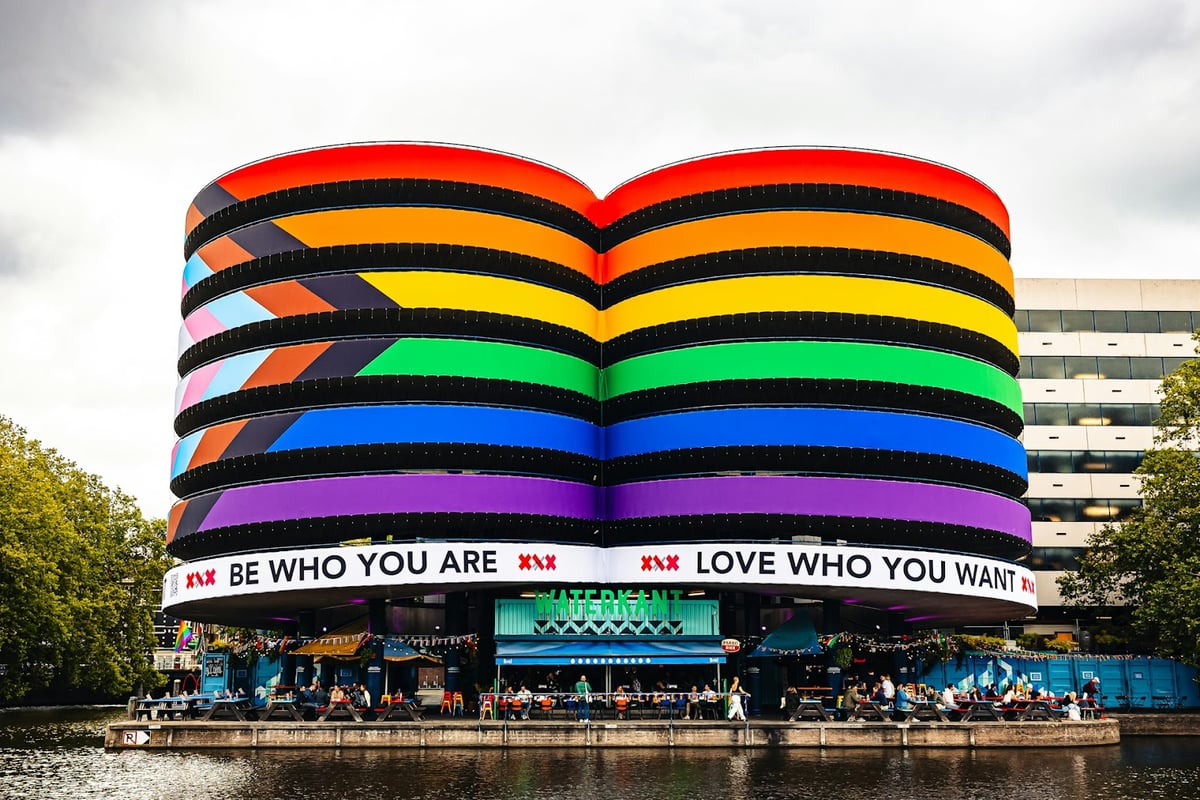You've probably heard the buzz about DEI programs lately— Diversity, Equity, and Inclusion.
They're everywhere, popping up in company mission statements, job descriptions, and even casual conversations around the water cooler.
But here's the thing: Are these programs the real deal, or are they just fancy buzzwords companies throw around to sound more appealing?
It's a fair question and, frankly, one I've wrestled with myself, as will everyone in the modern business landscape at some point over the next year or so if they haven't done so already. What are they about, what's the value, and what do you need to know?
Today, I'm deep-diving all these answers and more, outlining everything you need to know about DEI programs and providing a clear picture of what they offer.
Let's get into it.

Think of DEI as a three-legged stool:
On the practical side of things, this usually translates into a few common building blocks:
It's important to note that this isn't an exhaustive list.
A great DEI program is tailored to the unique needs of the organization. But with these core components, you're well on your way to fostering a workplace where everyone feels like they belong and can reach their full potential.
While it seems as though many people are getting starry-eyed about DEI, it's important to acknowledge that not everyone's on board.
There's a fair share of skepticism out there, and some of it is pretty valid, especially when you consider this is a new initiative that requires a lot of learning from everyone involved and will surely have some creases to iron out.
One common gripe is that diversity and inclusion programs can feel like window dressing.
You know, companies slapping a "We're Diverse!" sticker on their website without really changing anything internally. It's the same when you see a random company change their logo to a Pride-version for a month.
It can feel like a positive step, but it can also feel like a marketing ploy.

A jumping on the bandwagon, so to speak.
Most consumers and employers are a lot more savvy these days, and if it feels like a company is showcasing DEI because it wants to be seen in a good, profitable light rather than actually implementing high DEI standards that bring real value to the workplace and greater society, then what's the point? That approach is surely a fad and very surface-level.
The best way to see whether this is a problem is to examine what the company is actually doing to implement these standards.
Does the company have DEI goals? Are these backed up by concrete actions? Is there an actual way to measure progress? It's like saying you'll lose weight but never stepping foot in a gym – actions speak louder than words, right?
Another concern is that DEI can sometimes feel tokenistic. It's great to have a diverse workforce, but if people don't feel genuinely included, it's like inviting someone to a party and then leaving them standing alone in a corner.
And let's be real: poorly executed DEI initiatives can even backfire, reinforcing stereotypes or creating divisions, which causes even more problems in the long run.
So, does DEI actually make a difference, or is it just a bunch of hot air? Well, the data tells an interesting story.
Studies show that companies with strong DEI strategies tend to have happier employees and lower turnover rates. Think about it – when people feel valued and respected, they're more likely to stick around and give their best.
And guess what? Diverse teams are often more creative and better at problem-solving.
Plus, while it's not all about the PR boost, that's an important consideration. A solid commitment to DEI can do wonders for a company's reputation and, make them a magnet for top talent, and build a foundation for a lasting legacy for years to come.
Companies that can successfully adopt DEI now are certainly considered by many to be paving the way for future business.
After all, who wouldn't want to work somewhere where everyone feels welcome and supported?
So, while organizational DEI programs can definitely be misused, it's clear they also have the potential to spark real, positive change. It all comes down to how they're implemented.

So, we've established that DEI programs can be a positive thing as long as they're implemented in the right way and for the right reasons.
But when all these stars align, what does this actually look like in terms of impact, specifically on workplace culture and overall success?
Picture a workplace where everyone feels comfortable being their authentic selves, where ideas flow freely, and respect is the norm.
That's the kind of vibe a well-implemented DEI program can create. It's like adding a secret ingredient to your company culture, fostering a sense of belonging and connection that's hard to beat.
When people feel included and valued, it's a recipe for a harmonious and productive work environment.
It's like a well-oiled machine, with everyone working together smoothly. Plus, a DEI focus can help tackle issues like discrimination and bias head-on, making your workplace a safer and more supportive space for everyone.
Imagine brainstorming sessions that crackle with energy, fueled by a kaleidoscope of unique perspectives. Diverse teams bring a wider range of ideas and experiences to the table, leading to creative solutions and those "aha!" moments that drive innovation.
And those innovative solutions translate to real-world results, with studies showing that companies that embrace DEI often see improved performance and gain a competitive edge.
On top of this, an inclusive workplace is a fertile ground for growth and learning. Employees are encouraged to speak up, challenge assumptions, and share their unique insights. This creates a culture of continuous improvement that benefits everyone.
Bottom line: DEI programs aren't just about doing the right thing – they're about creating a thriving workplace that attracts top talent, sparks innovation, and boosts your bottom line. It's a win-win-win scenario!

It's pretty naive to imagine the implementation of a comprehensive DEI program going off without a hitch. Upon starting this sort of process, you're directly addressing preconceived ideas, thoughts, and stereotypes, many of which could be the default way of thinking for decades.
It takes time and a proactive approach to overcome such challenges, but if you know what they are, you can do something about it.
The biggie is resistance to change.
People can get comfortable with the way things are, even if it's not perfect. Change can be scary, and some folks might worry about losing their status or privileges. It's our job to show them that DEI isn't about taking away from anyone – it's about making the pie bigger and more delicious for everyone.
Another challenge is that pesky unconscious bias.
We all have it, even the most well-intentioned among us. It's like those sneaky little gremlins that whisper in our ears, making us judge people based on snap decisions instead of facts. It takes ongoing effort to identify and combat these biases.
And let's not forget the practical stuff. Resources can be tight, and getting buy-in from inclusive leadership isn't always easy. We need to be resourceful and creative to overcome these obstacles.
To overcome such challenges, your company must remember that DEI isn't a one-and-done deal. It's a marathon, not a sprint.
We need to constantly evaluate what's working and what's not and be ready to adjust our strategies as needed. It's also crucial to hold everyone accountable – from the top brass to the newest hire.
This could look like setting up inclusion in the workplace training programs (DEI training), changing the core guidebooks and training materials of the company, and taking things slow.
Remember, while a workforce of diverse backgrounds and demographics has a right to be respected, so do the original and perhaps outdated staff members, even if their way of thinking doesn't align with modern standards.
This is a process of respect, and it must be given two ways, no matter how difficult that can feel in the moment. This is the very foundation of inclusion efforts and, ultimately, an equitable workplace.
The trick to success is to showcase respect and understanding towards bias in the workplace, provide opportunities to learn about workplace diversity and everything it has to offer, both personally and professionally, and then be patient. Just like planting seeds in a garden, these things take time to grow into something beautiful.
But here's the good news: With dedication, open communication, and a willingness to learn, we can overcome these challenges and create workplaces where everyone feels like they belong.
It's an investment that pays off in countless ways, from happier employees to a more innovative and successful company.
So, where do we go from here? Are DEI programs the wave of the future, or just a fleeting trend?
I believe the answer lies in our willingness to move beyond empty words and embrace meaningful action.
DEI isn't about checking boxes or looking good on paper. It's about fostering workplaces where everyone feels respected, supported, and empowered to reach their full potential.
Yes, there will be hurdles. Change isn't always easy, and we'll need to navigate resistance, unconscious bias, and the ever-present challenge of securing resources. But the payoff is undeniable.
From a vibrant workplace culture to increased innovation and improved performance, the benefits of DEI are too significant to ignore.
As we move forward, it's essential that we keep learning, growing, and adapting. DEI isn't a static concept. It's about staying curious, seeking new perspectives, and constantly striving to create a more inclusive and equitable world.
I encourage you to champion DEI in your own workplace. Start conversations, challenge assumptions, and celebrate the unique contributions of every individual. Together, we can build a future where everyone has a seat at the table and a voice that's heard.
Find out if MentorCruise is a good fit for you – fast, free, and no pressure.
Tell us about your goals
See how mentorship compares to other options
Preview your first month
